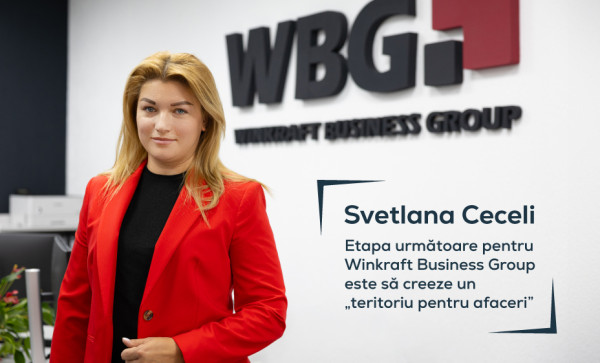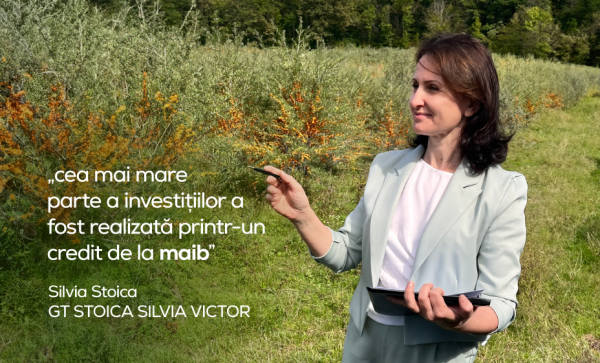Pavel Zingan in an interview with Ion Chihai, director and co-founder of Bons Offices, maib business customer.
Ion, hello! If you had to describe Bons Offices briefly, what would you say?
Hello! Bons Offices offers good services.
So let's talk in more detail about the services you offer.
We are in the printing business. Bons Offices is a printing house. We print books, brochures, catalogues, magazines, menus, and packaging.
When did you enter the market?
The company started in 1997, and I joined Bons Offices in 2003. At that time, the company was stagnating, and decisions had to be made to get it out. Until then, I had no experience working with printing houses. I had worked in a different field but decided to take a risk and do something new.
How did you start?
Customer relationships must be at the forefront of any business. It requires more than getting a new customer and signing a contract with them. Forming solid and long-lasting relationships, listening to their needs, and being open to unexpected situations are even more important. Good equipment is undoubtedly essential, but if you only focus on the technical side, you risk losing customers, so I always say that the customer must come first.
What were your production volumes in 2003, and how have they changed by 2024?
The market has grown significantly since 2003 and has continued for several years. When I came to Bons Offices, the team consisted of 9 people, and the sales volume was around 300,000 MDL. In 2023, the total sales volume was about 42 million MDL, and our team numbered 57 employees. During this time, we managed to change the location, choose a bigger space, and, of course, renew the equipment.
The technical side of the work depends mainly on the equipment. How did you choose the technique for the printing press?
Let's start with the fact that since 2003, we switched to a new working principle. We began to use loan funds actively. Until then, the company had only used internal resources to purchase equipment, which was insufficient. One of the first decisions I made as director was to use loan funds for equipment renewal. There was already a wide variety of new and second-hand specialised equipment on the market from different manufacturing countries and with various budgets. We opted for the Japanese brand Ryobi, and as we needed more funds for new equipment, we purchased second-hand equipment. Subsequently, we received a grant from the Japanese authorities through a Moldova-wide program and managed to buy new equipment.
How often should equipment be upgraded?
Printing houses equipment gets used out quickly. On average, it needs replacing every 4-5 years, depending on the type of equipment. There is equipment with a longer service life, but the market is changing fast, and producers are constantly coming up with new products, so we must keep up with all the trends.
Does new equipment always require a new loan?
In our case, updating equipment is almost always possible through lending. Throughout our work at Bons Offices, we have worked with different banks. Before the pandemic in 2019, we stopped at maib. Since then, we have been their customers and are satisfied with the bank employees' work and the relationship we have built.
How much was the company's business affected by the pandemic?
We had to suspend production for a while. It was difficult for us. One advantage was that the bank gave us some benefits and helped us to get out of the crisis more easily. At the same time, we could buy new equipment because the market prices dropped significantly, and we decided to take a risk and take advantage of this opportunity. Not only did we purchase new equipment, but we also started to develop a new area - packaging and boxes actively. We all remember the boom in delivery services during the pandemic. We struggled to keep up with this trend and started working in an area that had become extremely popular.
How competitive is the market now?
The market is oversaturated, and competition is very high. New printing houses are opened every year, but they don't always last long on the market.
In the age of total digitalisation, when tablets are increasingly replacing books and menus are replaced by QR codes, it's strange to hear about an oversaturated print market.
Now, it's pretty easy to open your own printing business, and that's why many people decide to try this business. However, it is more difficult to maintain and build long-term business relationships. As for the timeliness of printed materials in the age of digitalisation, one can draw a parallel with the time of the emergence of television, which many predicted was the demise of theatre. Yes, trends are changing, and alternatives are appearing, but we can only be happy to see the rise in popularity of printed books, which we have been seeing lately. Many new authors want to publish printed books. The situation is the same with restaurant menus - the QR code can sometimes replace a printed menu, and we always strive to offer quality and creative solutions for our products.





